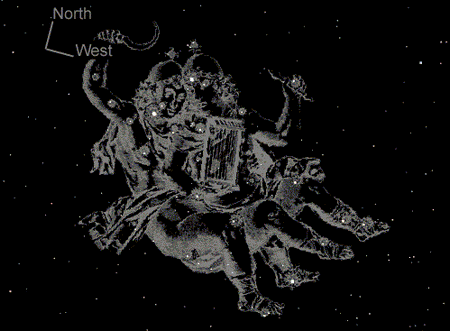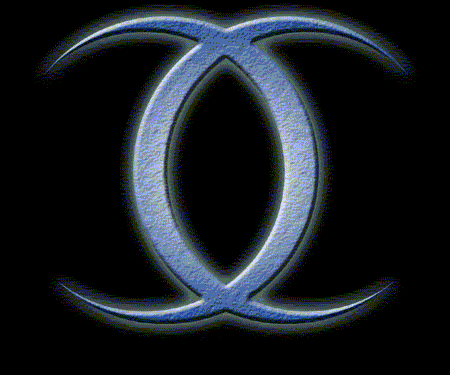In astrology the Gemini sign is the third sign of the zodiac year, and affects people born between May 21st and June 21st. In the astrological world of the zodiac, Gemini is considered the child of the zodiacal year, because being a sign with two personalities, Gemini people are considered a bit playful, alternating from one course to the next quickly and without too much thought about it.
Historically, the signs of the zodiac are relatively new in recent history, having their origins in Ancient Greek times, although many historians have proved that the key signs of the zodiac are actually much older, and can be traced to the very beginnings of human writing. Back in those times, much of what was written were historical accounts, so we can be certain that the signs of the zodiac probably predate writing, to the time when oral records of humanity’s history were passed from generation to generation almost unchanged for thousands of years.

Some historians have speculated cave drawings of people may also be an early representation of the gods and the signs. So whilst the zodiac signs, like Gemini, seem to be quite a recent discovery, they have in fact been with us for much longer, and in the eyes of astrology believers, proves that the traits and destinies inherent in zodiac signs have a long history of being known and believed, and were not just made up in recent history as is often alleged by people who see astrology as nonsense. Recent findings suggest that astrology as a religion and method of divining the future is much older than most established religions.
Amongst the Greek zodiac signs, Gemini is special, and can be traced to the story of two twin brothers, Castor and Polydeuces (also known as Pollux), one mortal, the other immortal, who were born to Queen Leda of Sparta. Castor was mortal, and his father was King Tyndareus, whilst Polydeuces was fathered by Zeus, the King of the Gods. Inseparable in life, they remain inseparable in death, and are depicted by the constellation that bears the name Gemini, with the stars Castor and Pollux forming the heads.
The story of how Castor and Polydeuces came to be in the heavens is an epic worthy of the times. Castor was an expert on horseback and with a bow, whilst Polydeuces could use his fists to box. The twins were also with Jason on his quest to bring back the Golden Fleece, but it was long after, when the two were tired of their adventures and ready to marry and have children that their story really becomes their own. The twins fell in love with the daughters of Leucippus, Phoebe and Hilaeira, who were unfortunately promised to the sons of Aphareus, Lynceus and Idas.

Castor and Polydeuces kidnapped the sisters and brought them to Sparta where they were quickly married, and within a short time expecting children of their own. The sons of Lynceus were determined to steal back their promised brides and ambushed Castor and Polydeuces, and when Castor was lying dead, Polydeuces pleaded with Zeus to give him his life back. Zeus agreed, but only on condition they share Polydeuces immortality, thus the twins spend half of their day in Hades, and half of their day in Olympus, and mortals only see them when they rise from Hades to Olympus early in the dawn morning.
Despite our knowledge of Gemini as representing the brothers Castor and Polydeuces, or Castor and Pollux as Roman people knew them, in fact the story isn’t directly about two heroes. The true meaning of the story relates the stars, known by the same name as the boys, which are the first to rise at dawn, a little before the sun obscures them, and more importantly, the two stars only rise in spring. Thus, the Gemini sign is particularly special because of it’s connection with rebirth and the spring equinox.
The Gemini sign though is restricted to the northern hemisphere, with almost all ancient civilizations, from Asia, the Europe, North Africa, and North America giving special significance to the rising of the twin stars during spring. Even people who have migrated over the equator in Africa and Asia still have myths that relate to twins that fight to be immortal, yet in Australia, where the oldest and most isolated branch of humanity exists, the Aboriginal people have no knowledge of immortal twins, suggesting the myths shared by so many cultures were formed in the north after humanity spread from Africa 50-75,000 years ago.
Before the Greeks and Romans told the story of Castor and Polydeuces, other civilizations around them were already very familiar with the twin stars. Ancient Egyptians saw the twin stars as two goats who return to their goat herd at dawn, and included the two stars in their Ramissede Hour Tables, a scientifically useful measurement of time during the day.

Nobody is sure when the ancient Egyptians first started studying astronomy and creating myths around the stars, but we do know that at the same time the ancient Babylonians referred to the twin stars as Gilgamesh and Enkidu, together known as Mastabba Galgal. They were two heroes, also twin brothers, who fought a series of epic battles against the gods as they sought to attain immortality. Curiously, they were worshipped for the same reasons as the Greeks leading to the theory the Greeks borrowed the story of the Gemini twins Babylon, and then changed them to suit their own history.
Earlier still in ancient Vedic books from India the twin stars appear as Nakula and Sahadeva, two of the Ashvin horseman of Indian folklore. The Mithuna, an Indian constellation in which the two horseman appear, is an almost exact match with the Greek constellation of Gemini, and can hardly be coincidental, so Greek zodiac signs must have their origins in the ancient oral history of humanity long before writing was invented.